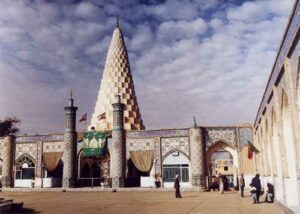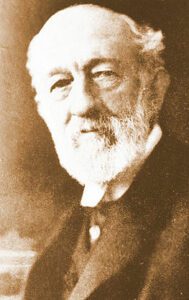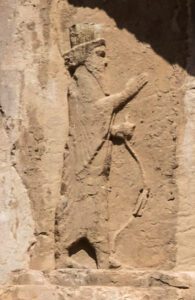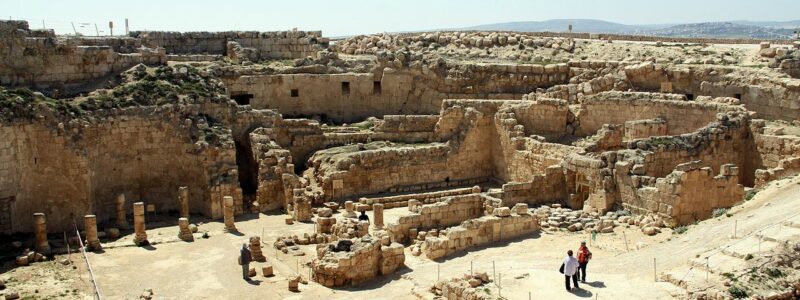The Time of Christ’s First Coming
The time of Christ’s first coming to the day was predicted centuries before. That is quite a statement, and yet it is true.
First-century Jews were looking for the Messiah who would fulfill all the prophecies from the Old Testament. They knew the time was near when he had to appear. But how did they know this?
Daniel and his Most Famous Prophesy

Daniel’s Tomb – Public Domain, Link
Daniel was a young man carried off to Babylon in 586 BC when King Nebuchadnezzar captured Jerusalem. Daniel was a very righteous man and received a revelation concerning the timing of the Messiah’s coming. This is very important because other prophets gave information about the Messiah’s mission, where he would be born and where he would live, and explicit information about how he would die.
But no other prophet received revelation about when the Messiah would come.
Daniel revealed that
from the time of the issuing of a decree to restore and rebuild Jerusalem until Messiah the Prince [King], there will be seven weeks and sixty-two weeks; it will be built again with streets and most, even in times of distress. Then after the sixty-two weeks, the Messiah will be cut off and having nothing, and the people of the prince who is to come will destroy the city and the sanctuary.
Several things are clear from this revelation. The Messiah will come sometime after a certain decree is given to rebuild Jerusalem; the Messiah will then be ‘cut off’ and ‘having nothing.’ All of this happened before the destruction of Jerusalem, and the Temple, which we know occurred in 70 AD.
But what did Daniel mean with this cryptic reference to ‘weeks’ of time? This has been extensively studied over the past multiple decades. Sir Robert Anderson was one of these scholars who tried to interpret this cryptic prophecy. Certainly, not every theologian agrees with his interpretation, but his remarkable conclusion adds some credence to his reasoning.

Robert Anderson – Daniel’s Weeks of years.
He was the assistant commissioner of the London Metropolitan Police (Scotland Yard) from 1888 to 1901 and was also a theologian and author. He proposes an understanding of the Jewish “weeks” with two Old Testament verses,
In accordance with the number of days that you spied out the land, forty days, for every day you shall suffer the punishment for your built a year, that is, forty years, and you will know my opposition. (Numbers 14:34).
This refers to a time shortly after the Jews left Jerusalem when they first came to the Promised Land. The people sent twelve spies in to search the land, and ten of these spies brought back discouraging news about the size of the people and the superiority of their fighting. This news then frightened and discouraged the people from entering the promised land God would have given them if they had enough faith to take it. Because of their unbelief, God decreed that they would wander in the wilderness one year for each day that the spies explored the Promised Land.
The other New Testament reference is,
When you have completed theses days, you shall lie down a second time, but on your right side, and bear the wrongdoing of the house of Judah, I have assigned it to you for forty days, a day for each year. (Ezekiel 4:6).
These two references show how Old Testament prophets counted ‘years’ by the number of ‘days.’ Forty days indicated forty years to both Moses and Ezekiel. Anderson reasoned that Daniel used the same symbolic reckoning and counted one prophet day as a year.
Anderson then reconstructs Daniel’s prophecy.
From the issuing of a decree to restore and rebuild Jerusalem, until Messiah the Prince, there will be seven weeks [of years] and sixty-two weeks [of years]. (Daniel 9:26).
Daniel claims that there will be a total of sixty-nine weeks of years (483 years) between a decree to rebuild Jerusalem and the appearance of the Messiah. The Jewish year consisted of 360 days (twelve months of 30 days each), leading to a total of
483 years times 360 days or 173,880 days.
The Decree Helps Determine the Date of Christ’s First Coming
The biggest challenge is to determine when that specific decree occurred. Anderson points to the Old Testament prophet Nehemiah, who described the decree to rebuild Jerusalem ‘in the month of Nisan in the twentieth year of King Artaxerxes”. (Nehemiah 2:1). The commonly accepted date that this occurred was on March 5, 444 BC.

Artaxerxes – By Diego Delso – This file has been extracted from another file: Naghsh-e rostam, Irán, 2016-09-24, DD 18.jpg, CC BY-SA 4.0, Link
Anderson argued that when Daniel said,
From the issuing of a decree to restore and rebuild Jerusalem until Messiah the Prince there will be seven weeks and sixty-two weeks.
When translated into modern English, he was saying,
From issuing a decree to restore and rebuild Jerusalem until Messiah the Prince there will be 173,880 days.
Daniel is thought to have written his prophecy in 586 BC. Since the decreed occurred in 444 BC, he wrote his prophecy about 142 years before its fulfillment.
Daniel also made another pertinent prophecy in Daniel 9:26, stating
The people of the ruler who will come will destroy the city and the sanctuary.
This ultimately occurred in 70 BC when Roman legions quelled a Jewish rebellion and destroyed Jerusalem, killing millions.
Daniel’s prophecies predicted Christ would appear between the decree in 444 BC and the destruction of Jerusalem and the Temple in 70 AD.
Anderson notes that Christ did not permit his followers to reveal his identity until he was ready. Christ revealed his identity when entering Jerusalem on a donkey on March 30, 33 AD. Christ rebuked the Pharisees’ protest and encourage the populace to shout, “Blessed is the king who comes in the name of the Lord.” (Luke 19:38). That was the day Christ publicly declared he was the long-awaited Messiah.
Anderson noted that the time span between the decree (March 5, 555 BC) and the time of Christ’s public declaration (March 30, 33 AD) were exactly 476 years. (There is no year 0). If we multiply 476 prophetic years of 360 days times 365.2421879 days in an average astronomical year (when corrected for leap years), we get 173,855 days. This is close to 173,880 days, but not exactly. However, if we add the 25 days between March 5 and March 30, we will get exactly 173,880 days.
Summary
The notion that an ancient prophet foretold the exact date when Christ would declare himself Messiah seems preposterous. How do we know Christ’s declaration was on March 30, 33 AD, and not on another historical day, for example? Why should we favor April 3, 33 AD, as the crucifixion date of Christ and not one of the many other proposed dates?
One answer might be because the data fit the historical timetable well. The many other dates for the decree and the crucifixion dates just do not fit the data. Furthermore, there is considerable historical confirmation of the 33 AD date. If we go back in time from the proposed crucifixion date, we discover a good candidate for the decree data.
There are many proposed dates for the decree, but none fit the historical requirements that the temple and the city wall would be rebuilt.
It also answers the somewhat mysterious questions about why Christ did not want his disciples to declare him as the Messiah publicly – this declaration had to occur on a precise date.
It is an amazing prophecy with an amazing confirmation that it predicted the public declaration of Christ to the day. And perhaps even more important, it also shows the exact day of Christ’s crucifixion on Friday after.
The crucifixion date of 33 AD seems to be the best fit for many of the historical facts surrounding the life of Christ, the historical information regarding Herod the Great, solar eclipse, and lunar eclipse on the evening after the crucifixion. It all comes together like a puzzle, finally making sense.




